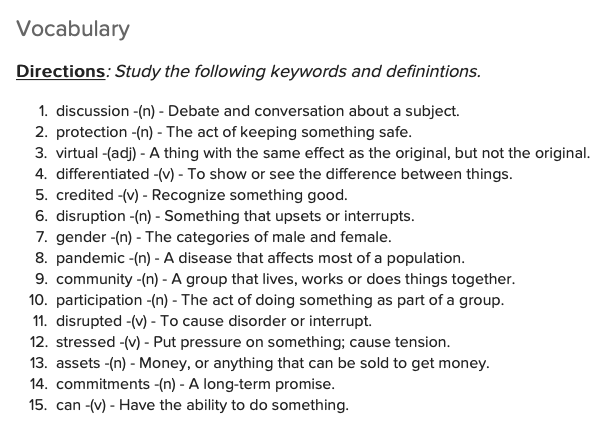
Guest article provided by: Madeline Hogan of lessonwriter.com.
There’s no doubt about it: the COVID-19 pandemic has been tough on children, their parents, and their teachers as well. Many teachers have a tough time reaching their students, especially those without access to reliable internet or WiFi, education technology, and other home-learning tools.
Fortunately, parents can support their children’s at-home learning with just a few simple tips to help with them with their reading skills.
Learning to Read Outside the Classroom
By providing reading help to your children, you are essentially helping them in every subject–not just ELA! Literacy is not solely for the English class: almost every class in the curriculum has some form of textbook or reading required for success. It sounds simple, but it can be forgotten!
Enhancing literacy overall enhances literally in every subject, supporting your child’s learning throughout their entire academic career.
Here are the five literacy skills to focus on, and how to use them to help your children with reading.
Reading Skill to Work on: Decoding
Decoding is students’ phonic and phonemic awareness, or their ability to apply their knowledge of letter sound relationships, patterns, and pronunciation. It involves both segmenting (taking apart the sounds in words) and blending (putting sounds back together).
The ability to decode is the foundation upon which all other reading skills–morphology, fluency, vocabulary, comprehension–are built on. Without decoding ability, children are unable to read and write at a proper grade level.
How to Practice This Reading Skill at Home:
Before, after, or during a reading with your child, choose contrasting word pairs that highlight different phonemes, like “bat” and “bet.” Then, have your children write these words in the air. This helps them picture the words in their mind and connect the different sounds to different word combinations both visually and auditorily.
Then, reread the passage or chapter again with your child, encouraging them to practice the different sounds throughout.

Reading Skill to Work on: Morphology
Morphology is the study of the words, how they’re formed, and their relationship to other words. It includes prefixes, suffixes, roots, stems, parts of speech, intonation, and of course, context.
Morphemes are the smallest grammatical units that are either stand-alone words, or make up words. The distinction is whether the unit is able to stand on its own: morphemes don’t need to, but words must. For example, “s” is a morpheme, but it “can’t stand” on its own. Versus “ball,” which is both a stand-alone morpheme, and a word.
It’s important to focus on a new word’s internal structure and meaning within the context of sentences. This includes not just the spelling of the word, but how the morpheme has changed the meaning.
How to Practice This Reading Skill at Home:
Morphology should be taught as a “cognitive strategy to be learned.” In order to break a word down into morphemes, once you realize your child doesn’t know the word, complete the following steps with them:
- Analyze the word for recognizable morphemes, both in the roots and suffixes. (Let’s say the word is remember.)
- Think of a possible meaning based upon the parts of the word. (What does “re” usually mean when attached to the beginning of a word? What other words use the morpheme “mem” in them?)
- Check the meaning you came up with against the context of the reading.
- If it seems to work, continue reading the passage, making note of the same morpheme(s) your child worked on. (Are there more repeated actions, like recall, redo, review? Do you see the words memory, commemorate, memorize? If not, feel free to share some other examples with your child as they work on the concept.)
Reading Skill to Work on: Fluency
Fluency is the ability to read quickly, accurately, and with the correct expression. To be fluent (aloud and in one’s head), one must understand what they’re reading and be able to add appropriate intonation.
When children lack fluency, they struggle with unfamiliar words, read slower, and read in phrases or chunks without portraying punctuation changes.
Fluency has three main components: accuracy, rate, and prosody. Accuracy is how automatically and correctly students can read and identify the words they’re seeing. Rate is the speed at which readers read, which will vary for age and grade level. Prosody, or intonation, is the emphasis we give certain words (via pitch, stress, and timing) to convey meaning.
How to Practice This Reading Skill at Home:
Fluency is a great skill to practice at home. It can be very challenging for teachers to find one-on-one time to work with students on their fluency skills, especially with new hybrid or virtual classrooms.
So, the more time a parent can help children develop fluency skills at home, the better! For example, repeated readings are an excellent way to help your child recognize high-frequency words easily and quickly, which will strengthen their ease of reading.
Having children reread short passages aloud is considered one of the best ways to promote fluency because they are actively engaged instead of passively listening.
Plus, reading at home takes away any pressure or discomfort they might feel reading out loud in front of their peers. Building up the confidence with you will make it more likely they’ll feel comfortable reading in front of others later.
Reading Skill to Work on: Vocabulary
Learning vocabulary (particularly academic vocabulary) is key for students’ literacy levels. Academic language is discipline-specific vocabulary that is important for students’ success in school, and is usually more complex than everyday language.
The components of academic language are the vocabulary used regarding concepts within a specific subject (e.g. allusion in English, or abiotic in Biology) as well as the vocabulary used across various disciplines to express ideas and information (e.g. analyze and predict).
The National Institute for Literacy has highlighted the importance of repetition in learning vocabulary, noting that, “Once vocabulary words have been selected, teachers should consider how to make repeated exposures to the word or concept productive and enjoyable.”
How to Practice This Reading Skill at Home:
Bring flashcards to the next level! Have your kids go beyond the word and definition to also include lists of examples and non-examples. This can be spoken, or talked out with you.
If they like to draw or are kinesthetic learners, ask them to draw a simple picture that reminds them of the new word, or connect the word to a physical action they can act out as they review.

Reading Skill to Work on: Comprehension
Text comprehension is the process of extracting or constructing meaning (that is, building new meanings and integrating new and old information) from words once they have been identified.
Text comprehension requires an understanding of decoding, morphemes, and vocabulary in order to make sense of both what words they’re reading, and what they text is trying to convey.
How to Practice This Reading Skill at Home:
Summarizing requires students to identify, connect, and restate the main idea of the passage. It helps students focus on the important content of a text, determine what is and isn’t important, condense the important content, and then restate it in their own words.
One of the biggest benefits of being able to summarize is that it helps students improve their comprehension of academic content. Comprehension relies on summarizing: students are effectively restating content in a concise way that helps them determine essential details and consolidate them from throughout the text. This helps with comprehension and recall of the information in the future.
Supporting Your Kids Reading Skills at Home Will Help Them See Success!
Though the COVID-19 pandemic has made learning more challenging this year, it is possible to support your child’s reading skills right at home. Even though this may not be the most exciting way to get through a story, enhancing their literacy will help foster a love of reading, and a confidence in their skills in all classroom content.
But, we know that parents are busy. Many are essential workers, have full-time jobs, and don’t have unlimited time in their day to work on reading skills. That, essentially, was why LessonWriter was born: to give teachers and educators back some time but doing the work for you.
LessonWriter is an online platform that creates literacy-support lessons from any online article you’d like! Just copy and paste the link, and immediately get pages of reading practice and skills for your child to work on.
Just make a free LessonWriter account, and use LessonWriter to create worksheets for your child that work on all of these skills, BUT covering information they love. Obsessed with dinosaurs? Use this article to make a lesson. More into fantasy? Use an online excerpt of their favorite story.
It doesn’t have to be extra homework for your kid: just use LessonWriter to make it easier for you to help your child with reading!
